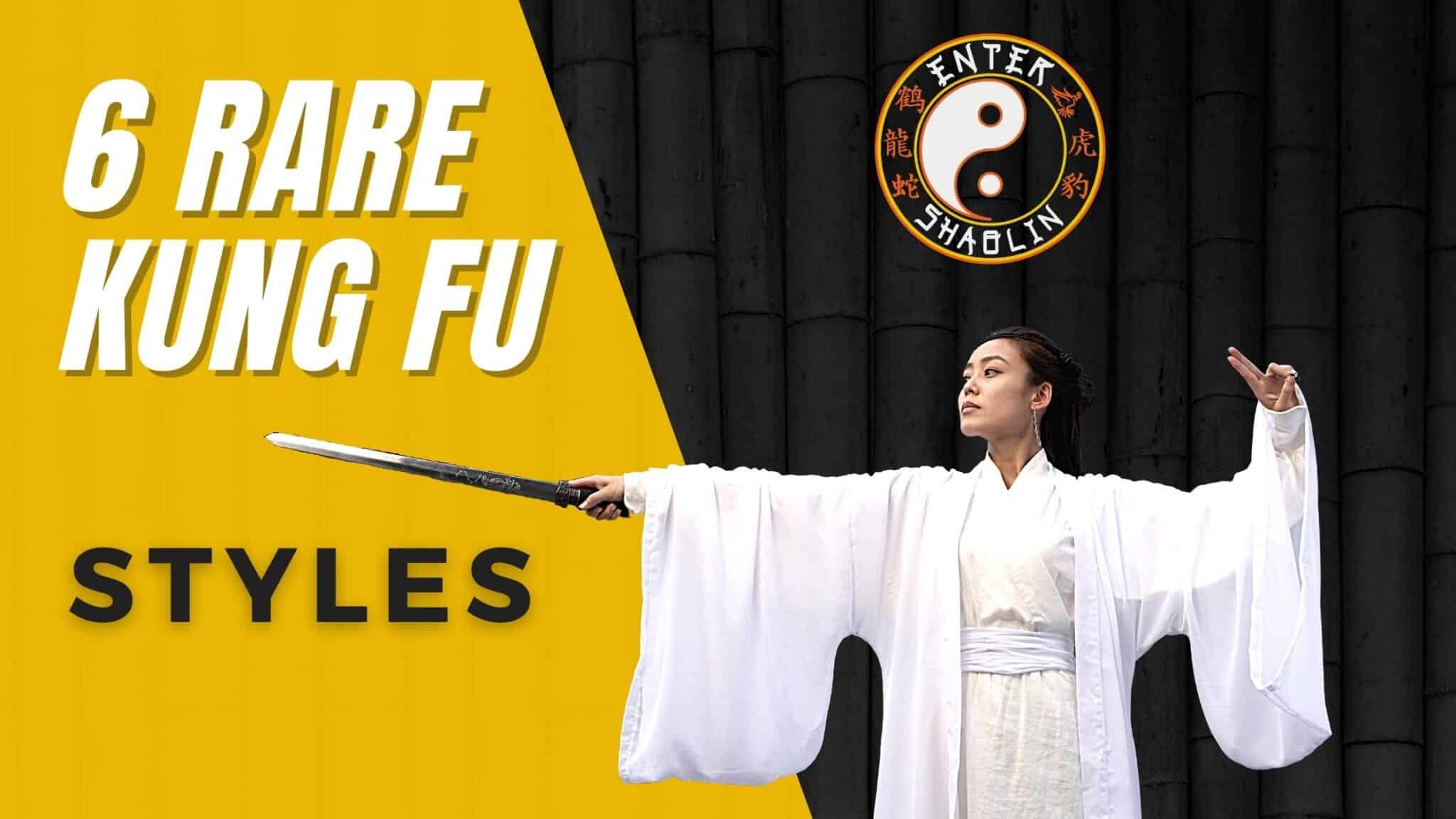
In this article, I’m going to talk about these rare kung fu styles Elephant Kung Fu, White Crane Kung fu, Duck Style, Praying Mantis, Crab Style, and Di Tang Quan.
I’m sure you’re curious about how these martial arts are taught. Read on to find out how they work! You may even be surprised to learn about a Kung Fu style that originated from the antics of a monkey!
Elephant Kung Fu
Although this style is considered one of the rare kung fu styles, it is based on techniques learned from animals.
The name is applied to groupings of techniques that borrow techniques from different animals. While there is no historical connection to the term Elephant Kung Fu, it is closely related to the style called Falcon, which draws on bird techniques.
The style emphasizes balance rather than brute strength. There are several forms of the Elephant style.
This style is based on Chinese close-quarter grappling techniques and may also include short-ranged strikes. This style is sometimes referred to as Ape Kung Fu because it uses asymmetrical techniques and non-the standard stance structure of monkeys.
While it is rare, it requires some knowledge of Snake Kung Fu. The style is known as the Asp style. It is practiced by both men and women.
The History of Ape Kung Fu
The history of Ape Kung Fu goes back centuries. The first known instance dates to Han-era China, when a sword-wielding hero fights against a white ape, holding a captive woman inside a tear-drop-shaped cave. The legend of the Han-era apes influenced the concept of “ape kung fu.”
Similar to the Python style, Ape Kung Fu utilizes rolling submissions and soft tissue attacks from transitioning ground positions. Sometimes, Ape Kung Fu is referred to as Monkey style kung fu, due to the asymmetry and nonstandard stance structure.
To learn Ape Kung Fu, you must also learn the Snake style of Kung Fu, and ape style consists of the same techniques.
Aside from ape kung fu, it is also an art form with a performance aspect. Chinese opera actors have used the technique in the past, with myths about the Monkey King insinuating it as an art form.
Nevertheless, it is not suitable for real-life combat. While it looks a little different, it resembles movie-style fighting. In movies, the fight choreography is exaggerated to ensure the safety of the actors and a good view for the audience.
For more information, consider examining the history of ape martial arts. The concept was first described in the thirteenth century by Chinese scholar Liu, J. Y. (J.Y. Liu) and has been used as a reference to sword and staff fighting.
These earliest texts, however, are lacking in historical references. Ape Kung Fu is the most recent martial art style, but its long-standing history goes back over 2000 years in Chinese culture.
White Crane Kung Fu
Rare White Crane Kung Fu styles have many characteristics in common with other forms of kung fu. In particular, this style emphasizes evading and sidestepping movements.
A basic technique, known as guo-men (crossing the threshold), uses a diagonal kick or stomp to damage a grounded opponent.
The primary purpose of these kicks is to disrupt an opponent’s balance and shift momentum against him. Additionally, this style features defensive capabilities and evasive moves that can be adapted to different situations.
Traditional White Crane Kung Fu styles are based on long-range striking. These strikes are aimed at a target from a long distance and are accompanied by the use of a beak to create precision blows.
Other techniques involve wing kicks and parries, which throw an opponent off balance and help the practitioner escape. The “Ch’in Na” technique is also used as a clinch.
What is Ch’in Na?
Ch’in Na refers to a set of joint lock techniques. Its name literally means “lock catch technique.” Qinna shu literally translates to “lock catching” in Chinese. It’s also known as “Qinna.”
This system has countless applications and is often used in conjunction with other techniques, such as Tai Chi, Wing Chun, or Wushu. Ch’in Na is especially effective in self-defense situations.
Di Tang Quan
Di Tang Quan is a rare style of Kung Fu. This style originated in China, where it was known as Lau Gar. This style was based on the Five Animals and was developed by Liu Sanyan and Lau Sam Ngan.
It is a mid-range fighting style and originated at the Kuei Ling Temple in Kong Sai Province in West China. The sets were taught by an unknown monk.
This style became popular in South-west China during the Qing Dynasty.
The art is still practiced today. In the past, Di Tang Quan was practiced by the Mok clan in southern China. It was passed down through the generations and now has an elite lineage.
The style uses various weaponry, including the Tonfa/nightstick. The earliest known version is said to have originated in the southern region of China but is not as well known as Hung Gar.
Duck style of Kung Fu
The Rare Duck style of Kung Fu is an excellent example of a Kung Fu system that has evolved over the years.
The rare shape of the duck’s hand weapon allows it to hit opponents over two feet tall. Other elements of the style include heavy sparring and sets.
While these practices can be difficult to master, the end result is a unique style of Kung Fu. Here are some of the features of the Rare Duck style.
The first routine of Mandarin Duck Boxing is called Rao Bu Quan. It consists of common hand strikes as well as distinctive leg techniques.
The kicks and sweeps are known as the wrap, scissor, heel, and sweep. The basic routine of Mandarin Duck Boxing is called the Circling Step Fist.
This routine contains all of the essential elements of this style of Kung Fu. After learning the basic routine, you can advance to more advanced techniques in this style of Kung Fu.
Mandarin Duck Boxing – Rao Bu Quan
Rao Bu Quan is the first routine in Mandarin Duck Boxing and focuses on the use of common hand strikes, distinctive leg techniques, and kicking.
The kicking techniques used in this routine include the heel kick, wrap kick, and scissor kick. Rao Bu Quan is the basic routine of the art, and it contains all of the essential elements that make it so effective.
Yuan Yang Quan is a famous martial artist and master of mandarin duck boxing. The moves in this martial art are characterized by round step movements performed in pairs, which are a variation of the classic Chinese boxing style.
The moves in Mandarin Ducks Boxing include mao techniques and are performed in pairs. Rao Bu Quan is also known as “Mandarin Duck,” the Circle Step Fist, and Mandarin Duck.
The basic form of Rao Bu Quan is similar to the classic Chang Quan.
Praying Mantis style of Kung Fu
The Praying Mantis style of Kung fu originated in Northern China. It was developed by Wong Long, a master in the Shaolin fighting system.
While training near a temple, he heard an insect duel and was inspired to train in it. The praying mantis took the lead by killing a cicada by holding it in its forearms.
After several years of study and practice, he was able to pass on the art to his son, Ma Qing Long.
The basic Praying Mantis style combines complex finger strikes with a variety of different techniques. Many of these are aimed at pressing pressure points on the victim’s body.
Practitioners also use closed fist techniques and strange angles in kicking and chopping. The Praying Mantis style of Kung Fu is particularly versatile and effective against larger opponents.
It is not suitable for beginners because it requires years of hard training and can only be taught by an expert.
Crab style of Kung Fu
The rare crab style of Kung Fu has a few distinct features. For one, the style is practiced in low posture and is primarily grappling and ground fighting.
The crab style encourages students to run like Forrest Gump, line up with their attackers, and use their body weight as leverage.
Students of this style also practice striking and blocking against several opponents. While the crab style has few if any specialized techniques, it does incorporate training weapons and a unique method of defense.
While there are many references online to this elusive style of kung fu. I haven’t found any actual footage of Crab Kung Fu being used in any meaningful way other than entertainment.



Awesome, kung-fu. I practice hung gar kung fu for 15 years my sifu in Sacramento ca. Are grandmaster is w.c Wong from San Francisco.